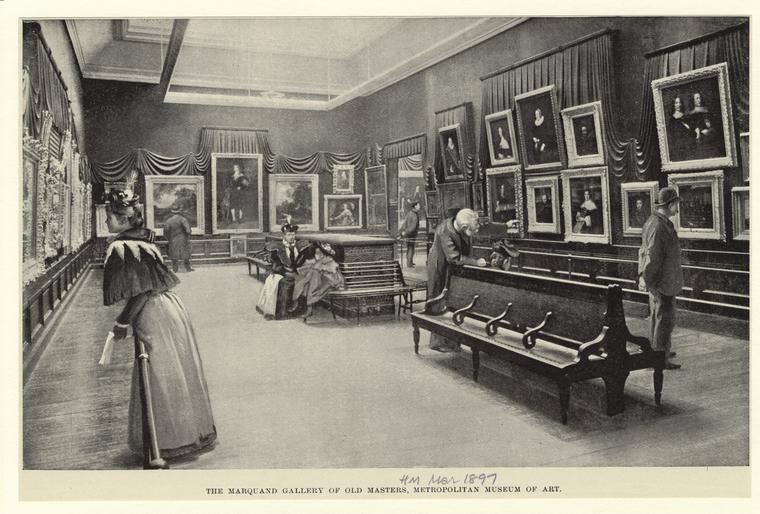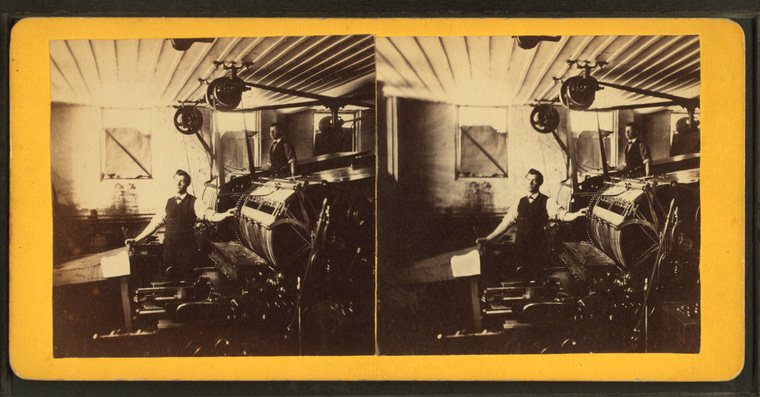Walter Benjamin on History, Collections, & Archives
“There is no document of civilization which is not at the same time a document of barbarism.”— Walter Benjamin
Much of Walter Benjamin’s work is a rebuke to the philosophy of historicism. For the historian who follows the doctrine of historicism, the truth of history is made scrutable through the marshaling of evidence (key dates, events, documents). In turn, this data is shaped into a chronological narrative that attempts to faithfully mirror the past as it happened. In the historicist conception, time flows forward in a straight line. Underlying this flux of sequential time is the belief that humankind moves towards some ultimate stage of progress. However, to concede that history follows a pre-determined timeline means the diminishment of the role of human agency in defining future outcomes. It also means acceding to the official record, and the official record is always written, according to Benjamin, by those in power.

"…if one asks with whom the adherents of historicism actually empathize. The answer is inevitable: with the victor. And all rulers are the heirs of those who conquered before them. Hence, empathy with the victor invariably benefits the rulers…"
Historical interpretation is mediated by the ideological motivations of those privileged individuals doing the act of interpreting. It is the malleability of the historicist past (that an historical narrative can be hijacked to serve an agenda of power) that defines the problem. As Orwell famously warned us in his novel, 1984, the tyrant falsifies reality by manipulating historical representation:
"Who controls the past controls the future. Who controls the present controls the past."
Benjamin’s own way of doing history attempts to counter the dangers implicit in historicism. Informed by Marxism, on the one hand, and mystical Judaism on the other, Benjamin appeals to a sense of cyclical time rather than linear time. This quasi-theological manifestation of time erupts in the present during instants of historical “danger.” The past appears as “dialectical images” that transcend “calendar time,” forging a nexus between truths expressed in earlier political epochs with current struggles. Rejecting the historicist’s causal picture of time, the historical materialist…
"…stops telling the sequence of events like the beads of a rosary. Instead, he grasps the constellation which his own era has formed with a definite earlier one. Thus establishing a conception of the present as the ‘time of the now” which is shot through with chips of Messianic time…"
Despite its metaphysical elements, the effort to “grasp” the “constellation” between past and present eras is invariably a moral one. Unlike historicism, which assumes an intellectual and ontological remove from its subject, Benjamin’s idea implies an active engagement in history.
Benjamin’s philosophical mission to stem the onslaught of historicized time was no doubt made more imperative by the advancing threat of the Third Reich. The Nazi regime posed a particular danger to Benjamin’s person given his status as a prominent Jewish intellectual. On September 26th, 1940, after an aborted attempt to flee the Nazis, Walter Benjamin took a lethal dose of morphine to evade a certain fate in the death camps.
Benjamin and collections
Benjamin’s philosophy eschews the givenness of reality, betraying a marked distrust towards the obvious. For a Marxist such as Benjamin, the slippery nature of appearances is a byproduct of capitalism—a system which purposely hides material realities behind the outward spectacle of circulating commodities. Such a critique considers the unconscious and hidden revelations that inhere in the material thing itself (the work-of-art, photograph, library collection), seeks the “non-intentional truths” that perhaps even slipped the attention of the object’s maker.
Benjamin has explicitly written on collections, or the act of collecting, on several occasions. His most famous essay on the subject, “Unpacking my Library,” welcomes the reader to peer over his shoulder as he unboxes his personal library. Dwelling on the dusty volumes, Benjamin opens a curtain on the obsessive world of book acquisition. The author is concerned primarily with the personal forum provided by a private library in building self-knowledge. Rejecting normative systems of selection and classification, the personal library for Benjamin appears to be as much a creative medium as it is a solitary intellectual resource. While Benjamin concedes that personal obsession can sometimes form the seedbed of larger public-facing research collections, he was ultimately more inspired by the anomalous and unclassifiable. On the other hand, he was also clearly interested in what larger societal truths could be gleaned from these non-public collections.
A similar curiosity is brought to bear in an essay on Edward Fuchs, an obscure historian and collector of Daumier caricatures (cartoons) and erotic art. Fuchs' main critical strength, as Benjamin saw it, was his intuitive speculation concerning the mass production techniques underpinning these objects. At the same time, Benjamin touts Fuchs' attempts to redeem these collected objects, somehow restoring their originary status by "saving" them from the "market" (be it the commercial market, or official institutions such as museums).
The reproduction of copies in a digital age
Benjamin is perhaps best known for his essay “The Work of Art in an Age of Mechanical Reproduction.” Responding to mechanical print methods of the early 20th century, particularly as they relate to photography, Benjamin laments the loss of the “aura” of the work of art as copies of the original are increasingly reproduced for commercial purposes. The aura is that elusive essence that makes the individual artifact a unique entity, thus separating the substance of the original from a subsequent multitude of seemingly exact copies. The idea has had important implications for a range of disciplines, including archival science and preservation, as it begs particular questions, such as: What makes an art object (especially from the past) authentic? And how do we preserve this quality of authenticity for posterity? While these questions may have found a provisional resolution in the form of workable preservation standards, they still pose philosophical quandaries for the rest of us.
The picture becomes even more murky in the age of computation, especially as the fidelity of the digital copy is ever more seamless, and the process of production and distribution of said copies is instantly shared among a community of networked users. This fact, coupled with the proposition that a multitude of file copies is essential for even the most fundamental computational process (such as Random Access Memory), makes the notion of the aura of the digital object seem ever more elusive. With the inability to situate the primary aura among a sea of instantaneous facsimiles, questions move beyond the object’s authenticity to locating its fundamental materiality. Here one must perhaps turn from Benjamin, to the post-modern philosopher of the copy, Jean Baudrillard, who was also interested in the question of the authentic and its many derivations.
The loss of the aura and fraudulence
In the 1970s, Baudrillard posited the notion of the hyperreal—a preposterous, yet somewhat useful notion of the copy without an original. In the age of media spectacle, the source of the primary image is rendered nearly meaningless by the dizzying multiplicity of copies and variants; so much so, that the derived images themselves take center stage over the original. Among other things, Baudrillard looks at Disney landscapes: those three-dimensional, idealized simulations (simulacra) that stand in for authentic sites (even as they bear generic and anodyne names such as “Main Street USA” ). These romanticized geographies stand in for places that scarcely existed in the first place. However, in the amusement park’s space, such renderings attain the feel of allegorized versions of reality itself. Hence: hyperreality.
In today's social media sphere, images circulate at lightning speed, while information in a multiplicity of forms is replicated, manipulated, easily made extensible, then re-deployed. Questions of authenticity and fraudulence, the original story and fake story, the signifier and the signified—all take on grave critical importance in our epistemic understanding of reality itself.
Using history in the present to redeem the past
"The only writer of history with the gift of setting alight the sparks of hope in the past, is the one who is convinced of this: that not even the dead will be safe from the enemy, if he is victorious.." —Walter Benjamin
Through his radically poetical method, Benjamin seems to crystalize our contemporary predicament: America, more often than not, perceives its history only in times of crisis. For example, the recent civic flashpoints related to police violence and corresponding mass protests, are often accompanied by a slew of shared social media posts, articles, images, content— some of which connects the present day violence to long-standing institutionalized systems of oppression such as slavery and Jim Crow. Likewise, persistent iconography of the post-Civil War South (with its statuary memorializing slaveholders and confederate generals) has finally come to a symbolic crisis. Controversies surrounding these pre-Civil Rights era relics are juxtaposed on the nightly news with images of police abuse against African Americans—a condition that has forced many people to question the entire state of affairs.
In effect, these charged imagistic moments appear to echo Benjaminian “constellations” between the present and earlier eras. These are the very dialectical images that “flash up in a moment of danger “thus making the experience of history not some academic thought experiment, but a living circuit between today and yesterday that somehow persists outside of chronological time.
Bibliography
Arato, Andrew and Gebhardt, Eike. The Essential Frankfurt School Reader. (Continuum International Publishing, 1982).
Baudrillard, Jean. Simulation and Simulacra ( University of Michigan Press, 1994).
Benjamin, Walter. Illuminations: Essays and Reflections. (Schocken Books, 1968).
Buck-Morss, Susan. The Origin of Negative Dialectics: Theodor W. Adorno, Walter Benjamin, And the Frankfurt Institute, (Free Press, 1977).
Moses, Stephane. The Angel of History: Rosenzweig, Benjamin, Scholem. ( Stanford University Press, 2009).
Read E-Books with SimplyE
 With your library card, it's easier than ever to choose from more than 300,000 e-books on SimplyE, The New York Public Library's free e-reader app. Gain access to digital resources for all ages, including e-books, audiobooks, databases, and more.
With your library card, it's easier than ever to choose from more than 300,000 e-books on SimplyE, The New York Public Library's free e-reader app. Gain access to digital resources for all ages, including e-books, audiobooks, databases, and more.
If you don’t have an NYPL library card, New York State residents can apply for a digital card online or through SimplyE (available on the App Store or Google Play).
Need more help? Read our guide to using SimplyE.




Comments
Excellent Article!
Submitted by Jennfier (not verified) on October 28, 2020 - 10:40am